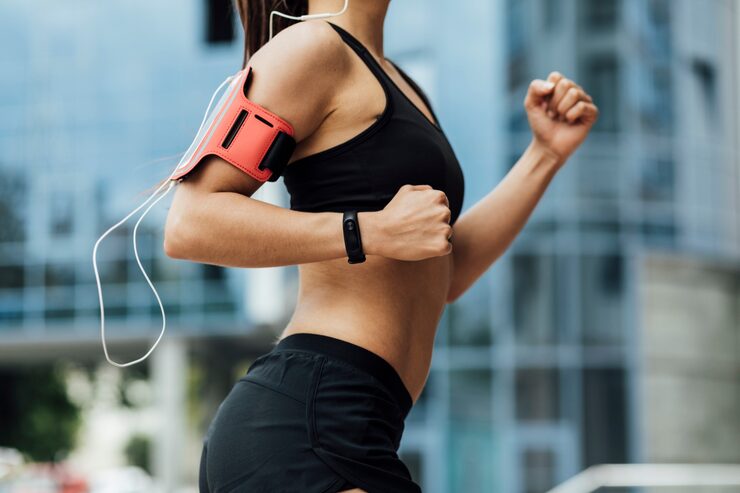Whether your goal is to build muscle, train for a sport, or lose weight, cardio matters. It keeps your heart and lungs healthy, lowers the risk of heart disease and stroke, and improves lung capacity.
Athletes need cardio to increase endurance. People trying to gain muscle use cardio to keep their heart strong and maintain workout intensity. For most people, cardio is also the most efficient way to lose weight. Choosing the right form of cardio can be tricky, though.

Two of the most common options are exercise bikes and treadmills. You’ll find both in every gym and fitness store. Each machine has pros and cons, and both let you work out at home regardless of weather or traffic. The following will help you pick the best option for your needs.
Exercise bikes: pros and cons
Exercise bikes are excellent for low-impact cardio and carry a lower risk of injury, but they usually give a lighter overall workout compared to treadmills.
Pros
– Low injury risk
– Easier to multitask
– Accessible for most people
– Good for lower-body muscles
– Low impact on joints
Cons
– Long sitting can become uncomfortable
– Burns fewer calories than running
– Less bone-strengthening benefit
– Little or no upper-body work
Treadmills: pros and cons
Treadmills get your heart rate up and offer many workout options, but they put more stress on your joints and lower back.
Pros
– Burns more calories
– Variety of workouts (speed and incline)
– Can help posture
– Strengthens bones and feet
– Uses more of your body
Cons
– Higher impact on leg joints
– Risk of falling
– Can strain the lower back
How they compare
Both machines will help you tone up, lose weight, and improve heart health. The differences come down to intensity, safety, and which muscles you want to use.
Treadmills generally burn more calories than exercise bikes, but they also carry a higher fall risk. People with balance issues, inner-ear problems, seniors, or anyone with limited lower-body control may be safer on a bike.
Running stresses the knees, feet, and lower back, which can help strengthen bones and improve posture when done properly. But if you already have knee or back problems, running can make those worse. Bikes are much gentler on knees and joints, which makes them a good option for people with osteoarthritis or similar conditions.
Treadmills tend to be more demanding because running uses your whole body—arms, shoulders, glutes, core, and the muscles that keep you upright. Many treadmills also offer incline settings that work different muscle groups and make workouts more challenging. Bikes are simpler: you mainly use your legs while seated, which makes them easier to multitask with (watching TV, listening to podcasts, etc.).
Anyone who needs low-impact exercise—due to injury or medical issues—can usually use a bike. But long periods of sitting on a bike can become uncomfortable.
Which burns more calories?
Calories are the body’s fuel. How many you burn depends on workout intensity, how much of your body you use, and your personal condition—assuming workout duration is the same.
Because running engages more muscle groups, it burns more calories than cycling. While both activities use your legs, running also works your arms, shoulders, core, and stabilizing muscles. Those extra muscles need energy too, so the total calorie burn is higher.
A medium-height, average-built man doing an hour of medium-intensity biking might burn around 800 calories. The same person running at medium intensity on a treadmill could burn about 1,000 calories.
Which is better for weight loss?
Weight loss comes down to burning more calories than you consume. Many factors affect this—metabolism, age, health, exercise history, and diet. If “better” means the fastest way to lose weight, treadmills have the edge because they burn more calories per minute. But they’re also harder on the body.
If you have knee or back pain, or you need to multitask during workouts, a bike might be a more realistic choice. For a healthy adult with no major issues, a treadmill will usually produce faster results. Pair exercise with a high-protein, nutrient-rich diet to preserve muscle while losing fat.
Toning legs: bike vs. treadmill
“Toning” is often misunderstood. You can’t spot-reduce fat, but you can lose body fat overall and build muscle. Losing fat depends on a calorie deficit; where fat disappears first is largely genetic.
For fat loss, treadmills have an advantage because they burn more calories. For building leg muscle, cycling can be more effective for quads and hamstrings, while running activates the legs more evenly and also works glutes. So biking might build more bulk in the legs, while running can develop a more balanced lower body.
Final thoughts
Both treadmills and exercise bikes are effective cardio tools. The best choice depends on your goals, health, and lifestyle. Bikes protect your knees, put less strain on your lower back, and build leg strength with low impact. Treadmills offer a more intense, full-body workout that burns more calories and strengthens bones and tendons, but they’re tougher on the body.
In short: choose an exercise bike if you have joint or back issues or fall risk. Choose a treadmill if you want the most efficient, intense calorie burn in the least time. Your needs and comfort should guide your decision.
Petra Nakashian
Petra Nakashian has written about nutrition, natural health, and ingredient research for over 10 years. After losing both parents to cancer at a young age, she became determined to understand how diet and lifestyle affect long-term health. Petra focuses on evidence-based wellness, drawing on scientific studies, expert sources, and years of research. She’s known for clearly explaining hidden ingredients in everyday foods and drinks so readers can make informed, healthier choices without the fluff.